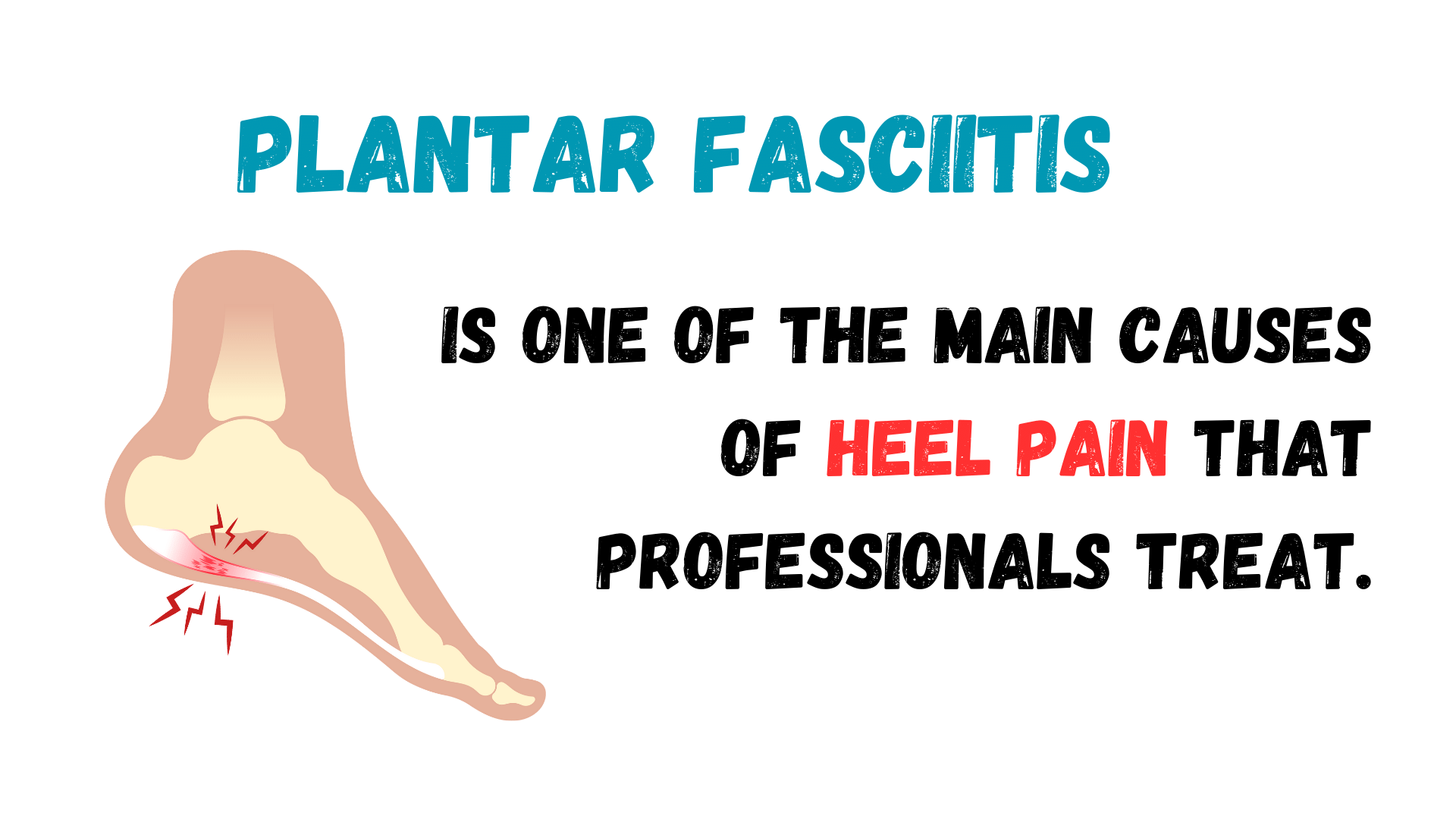Understanding Plantar Fasciitis: Exploring Symptoms, Causes and Treatment
Understanding Plantar Fasciitis: Exploring Symptoms, Causes and Treatment
What’s on this page
What is Plantar Fasciitis?
Plantar fasciitis is one of the main causes of heel pain that professionals treat.
The condition of Plantar Fasciitis is when the thick band of tissue that runs along the sole of your foot suffers from inflammation. This ligament is called the plantar fascia and runs from the base of your heel to the ball of your foot (base of the toes). Its main function is to support your foot arch, while also providing shock absorption.
Even though (as I have) you will find most commonly that inflammation is the cause of plantar fasciitis, there are cases that see an absence of inflammation in people suffering from plantar fasciitis. In this instance, it is considered a degenerative condition with the symptoms of micro tears on the plantar fascia from trauma or stress.
It is possible that both teams are correct, and that at different stages of the condition, one can have either symptom.
Plantar Fasciitis Symptoms
Some other quick points to consider are:
- Pain can decrease while the foot is rested.
- Foot pain can often come after exercise.
- Noticeable swelling of the heel area.
The main symptom is a sharp knife-like pain when first waking up in the morning. This will usually be localised in the area where the plantar fascia attaches to the heel bone.
Most people experience this lancing heel pain in the morning when they first wake up and start walking and putting weight on the foot.
The pain will increase as you spend long periods either standing or walking. It can also be something that will be felt when you first get up from being seated.
Not explicitly a symptom of plantar fasciitis but found to have a possible correlation, is heel spurs. This secondary condition may or may not be located in the area of pain but is typically located at the base of the heel bone towards the front. It is thought that the heel spurs can be more likely to be present if the condition has been ignored or self-managed for a prolonged amount of time before seeking help from a professional.
The above symptoms are a good first start in your research but do not forget that diagnosis of plantar fasciitis requires a medical professional to assess your symptoms, medical history, and other things like recent activity.
What risk factors are there that can cause plantar fasciitis?
High levels of activity – The main cause of this condition is stress and trauma to the plantar fascia with overuse and strenuous activity. This is why runners have a higher risk of acquiring the condition. So, if you are suffering from the above symptoms and have realised that you had a substantial increase in activity, this could be a sign.
Body weight – A direct correlation to stress on the plantar fascia is the weight it must carry and the work it must do to absorb shock. This can cause direct stress with micro-tears in the ligament and ultimately lead to the possibility of plantar fasciitis.
High Arches & Flat Feet – The gait of a person can affect how weight is distributed along the foot, and this can result in abnormal stresses to the plantar fascia. Your podiatrist is able to assess your gait and advise on orthotics, slips, and pads that will help with correction and better distribution. Hopefully solving a problem before it becomes an issue.
Poor footwear – More of an issue for women than men, is footwear. With women spending many years in tight-fitting heeled shoes, this can cause issues with feet and result in numerous complications, including plantar fasciitis.
But, for everyone, arch support is important, and flat-soled shoes, sandals, and thongs can also be a factor in the long term. Knowing your gait, and where you need support is a huge benefit when choosing the correct runner. So, it is important (especially if you run for exercise) to have your gait assessed by a professional. You can then make an informed purchase with that knowledge and reduce the risk to injury.
What options are available to treat plantar fasciitis?
This can be a frustrating condition for patients as the recovery process can be a long one depending on the severity of the injury and requires discipline in the self-management of directions for recovery. With work, and the demands of life it can be hard to make sure you give your foot the best chance for rest and recuperation it will need.
Usually, you will be looking at 6 weeks minimum of treatment and direction. This could be as easy as the direction for rest, along with some exercises and stretches. But this is a starting point, and all people vary. The good thing though, is that it is quite uncommon to not have the condition eventually resolved if treatment directions are followed.
- Stretching and physical therapy – Your podiatrist will be able to advise you on what stretches and exercises to do, how to do them, and how often. This will be the most common form of treatment you will encounter for this condition, and most likely the most effective.
- Strapping of the foot – Taping of the foot can provide extra support to your foot and alleviate some of the strain on the plantar fascia as it recovers. This taping can be done by your podiatrist or self-managed.
- Orthotics: Shoe inserts – One of the best options for treatment is a simple and passive one. Just having the correct insert can . These can be custom, specific for your foot, or of a more generic version. Most podiatrists will have their own range available of trusted products they recommend and sell. Orthotic inserts can also have an added benefit even after the condition has healed, especially if you find your gait or another circumstance can make you prone to the condition.
- Controlled Ankle Motion Boot (CAM) aka Moon Boot – You’ve seen them before, as they are hard to miss, but the moon boot as people like to call it is an effective tool to alleviate movement and weight stress to the foot as it heals. Your podiatrist will be able to assess if this will be a necessary treatment.
- Night splints – Night splints can be used in a neutral position or to put the foot into positions in which it stretches the ligament overnight. This is generally adjusted with foam inserts to get to the desired level of stretch.
- Medication/injections – cortisol steroid injections can be a method to give fast relief and can give good results in the short term, but as this trial study done by La Trobe University in 2016 reveals; Orthotics seemed to help better in the long term with a much less invasive treatment.
- Extracorporeal shockwave therapy – Not found at all podiatrists, but another tool to be used in recovery is shockwave therapy. First used to break down kidney stones, this technology has been adopted by podiatrists for such conditions as plantar fasciitis. It uses acoustic shockwaves to promote revascularization which is basically to promote blood cells to the area helping speed the body’s natural recovery from injury.
- Surgery – Surgery is a possibility, but only done for the most severe of cases and only when all other treatments have been exhausted as a last resort. Surgery comes with its own risks, and it is not guaranteed with any success.
Step Ahead Podiatric Clinic
If you think that you may have this condition (or another) and want some friendly expert advice and treatment, please feel free to contact us a Step Ahead Podiatry.
Step Ahead Podiatry is located in Mount Eliza, along the Mornington Peninsula of Victoria.
We are ready to take your enquiries for a consultation on 03 9708 8626 or you can find our contact form at our Contact Us page if you prefer written communication.
Book an Appointment
Book an appointment below or give us a call or email through the contact us page.




